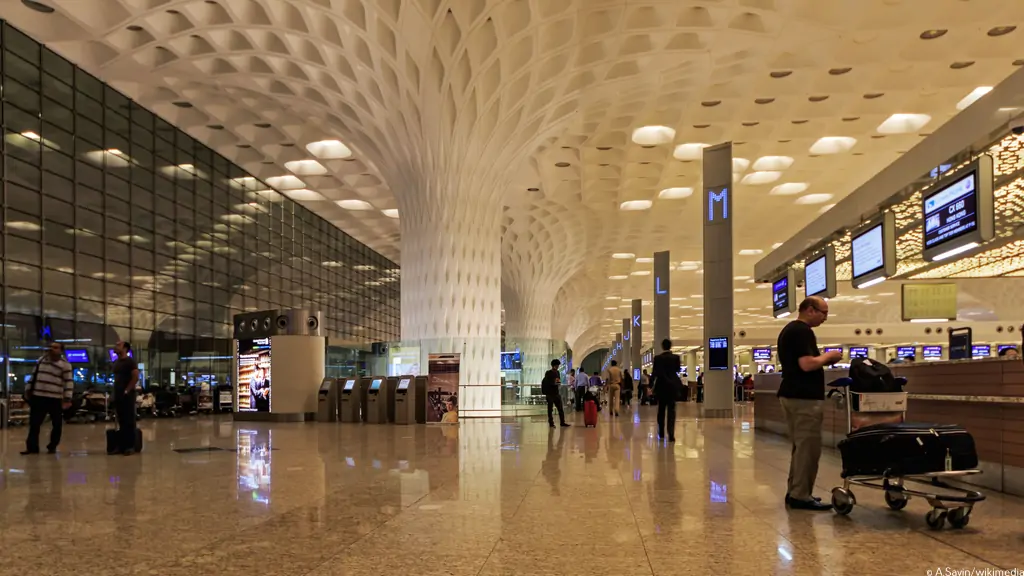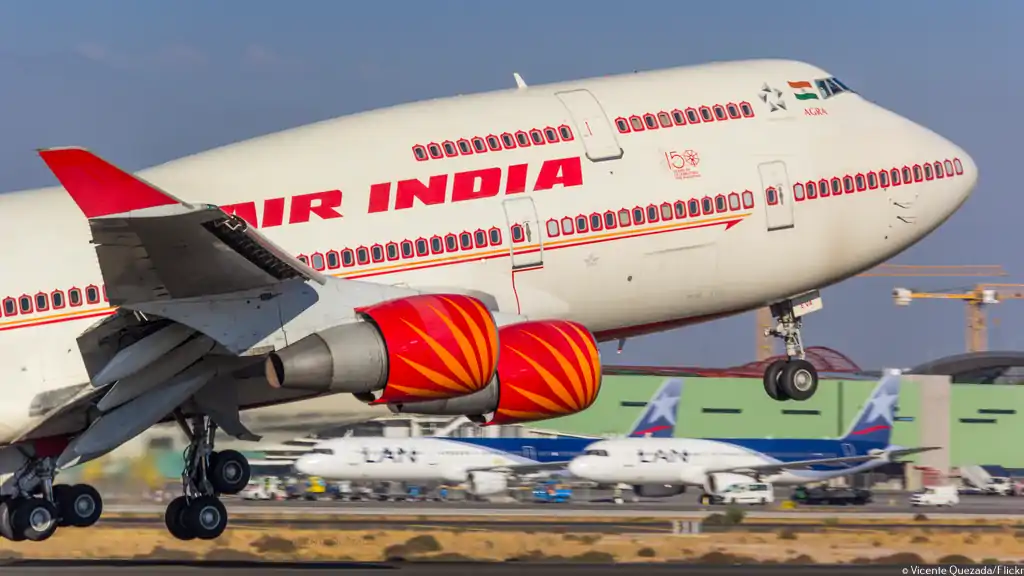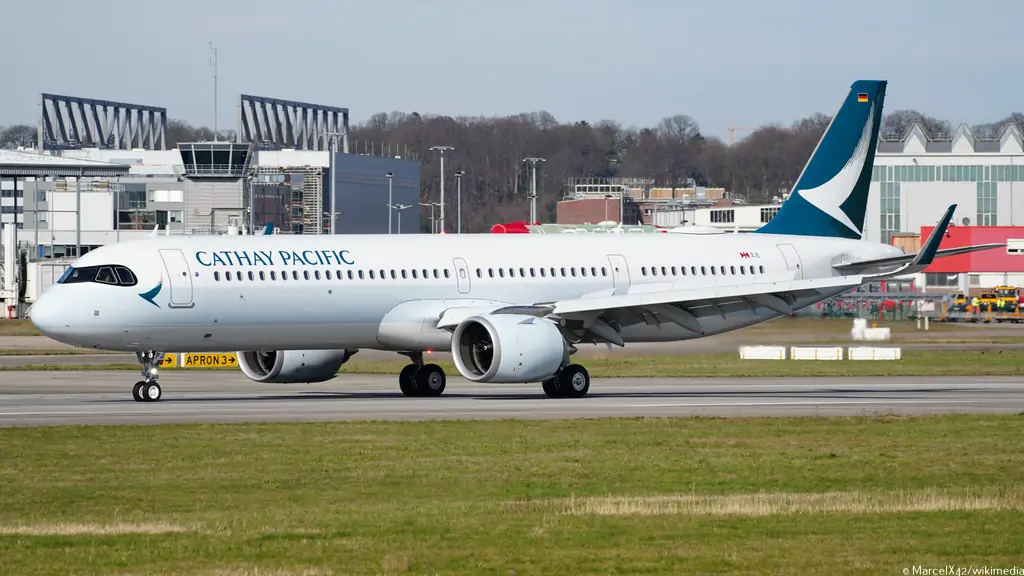Air India and All Nippon Airways have signed a codeshare agreement connecting their networks.
The new commercial partnership will provide more travel opportunities for customers of both airlines, who will benefit from the enhanced flight selections between India and Japan.
With this agreement, effective for travel from 23 May, Air India and All Nippon Airways guests will fly to their desired destination by combining those flights between India and Japan with a single ticket. In addition, guests of both airlines flying on codeshare flights will enjoy premium services such as lounge access and priority boarding that Star Alliance offers to its premium members.
Available for sale from 23 April, Air India will add its ‘AI’ designator code on ANA’s flights between Tokyo Haneda and Delhi as well as Tokyo Narita and Mumbai, while All Nippon Airways will add its ‘NH’ designator code on Air India's flight between Tokyo Narita and Delhi. Air India and ANA are considering further expanding their cooperation on additional routes.
“This codeshare agreement with All Nippon Airways marks an important step forward in connecting India and Japan," said Nipun Aggarwal, Chief Commercial & Transformation Officer, Air India. “This collaboration broadens our network connectivity and offers our guests seamless travel experiences and a wider choice of flights between the two countries. We look forward to a successful collaboration with ANA and exploring further avenues for cooperation in the future.”
This agreement will contribute to further consolidating the economic and commercial relations between India and Japan and will offer Indian tourists the opportunity to broadly discover the wonders of Japan and Japanese citizens the opportunity to easily travel to India, ensuring the highest standards of safety.
"We look forward to building this strategic partnership with Air India, as it is a significant step towards furthering stronger air connectivity and enhancing customer experience between Japan and India," said Katsuya Goto, Member of the Board and Executive Vice President of Alliances and International Affairs, All Nippon Airways. “This collaboration is a testament to ANA's commitment to improving the air travel experience for all of its travellers and we hope this will lead to a seamless travel environment between our two nations.”
Read next
Mumbai's Chhatrapati Shivaji Maharaj International Airport (CSMIA) saw over 52.8 million passengers in FY 2023-24, showcasing a 16% rise in passenger traffic when compared to the last fiscal (43.9 million).
The airport said it welcomed more than 26 million passengers on arrivals and 26.7 million passengers on departures. CSMIA accommodated 324,972 ATMs, recording a 12% year-on-year growth rate compared to FY 2022-23 (290,387 ATMs).
The total bags processed at CSMIA during FY2023-24 surpassed 40.7 million, marking a 31% upsurge compared to FY 2022-23 (31 million).
Delhi, Bangalore, Chennai, Hyderabad, and Ahmedabad retained their positions as the top 5 domestic destinations for CSMIA, while Dubai, London, Abu Dhabi, Singapore, and Doha were the preferred top 5 international destinations. IndiGo, Air India and Vistara emerged as the top players in terms of market share among airlines for both international and domestic sectors.
CSMIA expanded its international connectivity adding destinations such as Almaty, Lagos, Jakarta, Entebbe, and Melbourne during this year. Additionally, there were increased frequencies to destinations including Paris, Nairobi, Frankfurt, London, Doha, Hanoi, Ho Chi Minh City among others. London has seen a notable 55% increase in passenger traffic (~400k additional passengers), while Istanbul recorded a significant 68% surge, and Hong Kong experienced an extraordinary 258% growth in travel activity compared to last fiscal.
In terms of share, the Middle East leads with a robust 49% share, followed by Asia Pacific at 24%. Europe maintains a significant 18% share, while Africa and North America contribute 6% and 3%, respectively.
During this year the airport also completed its runway re-carpeting project for Runway 14/32, resulting in improved overall operational efficiency and unveiled "Taxiway Z" as part of its efforts to reduce aircraft taxi time, thereby significantly decreasing carbon emissions. The introduction of Taxiway Z marked CSMIA as the first in the Asian region to offer a flexible-use apron.
Read next
In a significant move in the aviation industry, aftermarket aircraft broker AerSale has successfully inked a deal to purchase four Boeing 747-400 aircraft from Air India. This acquisition marks the conclusion of a protracted marketing campaign aimed at selling these iconic aircraft, which last served revenue flights for the Indian flag carrier in 2021.
The Journey to Sale and A Closer Look at the Aircraft
According to insights from ch-aviation, the process of selling these aircraft had been ongoing, with varying degrees of progress. Until recently, only one of the four aircraft had found a buyer, while agreements for the remaining three were in place but awaited finalization. Facilitating the sale was UK-based remarketing firm Skytech-AIC, which played a pivotal role in the transaction.
The four Boeing 747-400s earmarked for acquisition by AerSale are identified as VT-ESO (MSN 27165), VT-ESP (MSN 27214), VT-EVA (MSN 28094), and VT-EVB (MSN 28095). With manufacturing years spanning from 1993 to 1996, these aircraft boast a rich history within Air India's fleet. Presently, they are stored at Mumbai International, awaiting their next chapter.
The Transition Process and A Nostalgic Legacy
VMAN Aero Services has been entrusted with the responsibility of overseeing the transfer of these aircraft to AerSale. Post-transfer, the plan is to repurpose two of the aircraft into freighters, catering to the evolving demands of the cargo market. Simultaneously, the remaining two aircraft will undergo the process of being parted out, ensuring that their components find renewed utility.
Air India's association with the Boeing 747 series spans several decades, characterized by a diverse fleet that served both commercial and governmental needs. From 1971 to 2001, the airline operated a total of twenty-five B747 types, including variants like the B747-200B, B747-300M, B747-400, and B747-400M. These aircraft played a dual role, serving passengers on scheduled routes and dignitaries as VIP transports.
Looking Ahead and Final Thoughts
With this acquisition, AerSale is poised to leverage the versatility and reliability of the Boeing 747-400 series in meeting the demands of the global aviation market. The conversion of two aircraft into freighters aligns with the industry's growing emphasis on cargo transportation, while parting out the other two ensures the efficient utilization of their resources.
The sale of Air India's B747-400s to AerSale represents a significant milestone in the aviation industry, marking the conclusion of a prolonged effort to find suitable buyers for these venerable aircraft. As they embark on a new journey under new ownership, the legacy of these Boeing 747s continues to resonate, symbolizing an era of aviation excellence and innovation.
With Inputs from ch-aviation
Read next
SpiceJet, one of India's prominent airlines, finds itself embroiled in a fresh legal battle as three special purpose vehicles (SPVs) controlled by lessor DAE Capital initiate insolvency proceedings against the carrier. This move comes after the SPVs filed insolvency petitions at India's National Company Law Tribunal (NCLT) in March 2024, signaling escalating tensions over unpaid leases and mounting financial pressures.
Legal Action and Court Proceedings
AWAS 36698 Ireland Limited, AWAS 36695 Ireland Limited, and AWAS 36694 Ireland Limited, lessor entities, lodged insolvency petitions against SpiceJet on March 9, 2024. The matters were brought before the NCLT this week, where the court adjourned proceedings until May 30, instructing SpiceJet to submit its initial response within two weeks.
Background of Lease Dispute and Dual-track Legal Strategy
The leased aircraft, all Boeing 737-800s, were part of SpiceJet's fleet between 2019 and 2022, registered in India as VT-SYY (MSN 36698), VT-SYX (MSN 36695), and VT-SYW (MSN 26694). The SPVs previously pursued legal action in the UK High Court, resulting in a judgment favoring them with approximately USD 9.2 million in November 2023, citing unpaid leases and associated costs.
In a strategic move, the SPVs are pursuing a dual-track approach to recover the owed funds. They aim to enforce the UK judgment in the Delhi High Court while simultaneously seeking SpiceJet's insolvency declaration in the NCLT due to its failure to meet financial obligations. However, SpiceJet has vigorously contested these actions, with its counsel, Krishnendu Dutta, highlighting flaws in the insolvency petition presented to the tribunal.
SpiceJet's Legal Defense, Implications and Future Outlook
SpiceJet has a history of successfully thwarting insolvency petitions in the NCLT. In previous cases, petitions from lessors such as Willis Lease Finance and Wilmington Trust SP Services (Dublin) were dismissed by the court on grounds of not meeting the criteria as operational creditors or assignees of debt. Nevertheless, an active insolvency petition from Aircastle remains pending, awaiting judgment.
The legal saga between SpiceJet and its lessors underscores the complex dynamics within the aviation industry, particularly amidst financial strains exacerbated by the COVID-19 pandemic. The outcome of these legal battles will have significant implications for SpiceJet's financial stability and operational continuity, while also setting precedents for similar disputes within the sector.
Conclusion
As SpiceJet navigates through a turbulent legal landscape, the airline industry watches closely, recognizing the broader implications of this dispute on lessor-airline relationships and the regulatory environment. With the NCLT proceedings underway and legal arguments being presented from both sides, the resolution of this conflict will shape the future trajectory of SpiceJet and the aviation sector at large.
With Inputs from ch-aviation
Read next
In the tumultuous landscape of global aviation, few airlines have faced challenges as formidable as Cathay Pacific. From political unrest to the COVID-19 pandemic, Cathay has weathered storms that have severely impacted its operations. As the airline strives to regain its footing, recent data and statements provide insights into its journey towards recovery.
Navigating Through Turbulence and March 2024: A Step Forward
Since 2019, Cathay Pacific and Hong Kong International Airport have grappled with disruptions that have tested their resilience. Political unrest in Hong Kong and subsequent travel restrictions due to the pandemic inflicted significant blows on the airline's operations. However, recent data suggests a glimmer of hope amidst the adversity.
Cathay Pacific's March 2024 traffic figures offer a snapshot of its progress. Despite carrying 40% fewer passengers than in March 2019, the airline reported a credible increase of 42.4% year-on-year. Notably, the capacity measured by available seat kilometers rose by 48.9% year-on-year, indicating a significant expansion in operations.
Demand Dynamics and Market Realities
While capacity increased substantially, demand, as measured by revenue passenger kilometers, rose by 38.1% year-on-year. However, this growth was not sufficient to offset the surge in capacity, resulting in a decline in the passenger load factor by 6.6 percentage points to 83.8%. Similarly, in the first three months of 2024, despite a 55.7% increase in passengers carried, the load factor fell by 4.9 percentage points to 83.0%.
Cathay Pacific's performance reflects broader market realities. While the airline has the capacity to return to pre-pandemic levels with around 18% of its fleet inactive, demand remains a critical factor. The gap between pre-pandemic and current passenger levels underscores the challenges of stimulating demand amidst lingering uncertainties.
Cargo Resilience and Looking Ahead
Amidst passenger struggles, Cathay Pacific's cargo segment presents a contrasting narrative. Cargo demand surged in March, with tonnage up by 26% compared to the previous month and 11% year-on-year. This resilience underscores the shifting dynamics of global trade and the vital role of air cargo in facilitating supply chain continuity.
Despite the hurdles, Cathay Pacific remains cautiously optimistic about the future. Strong demand from the United Kingdom and robust traffic during the Easter holiday period signal pockets of opportunity. Additionally, the forthcoming Chinese mainland Labor Day Golden Week holiday period presents avenues for growth, with Cathay adding around 200 round-trip flights per week to mainland China.
Conclusion
Cathay Pacific's journey towards recovery is characterized by incremental progress and persistent challenges. While capacity expansion and cargo resilience offer glimmers of hope, the road ahead remains uncertain. Navigating through turbulent skies will require adaptability, strategic foresight, and a deep understanding of evolving market dynamics. As Cathay Pacific charts its course, the question lingers: Is its flight to recovery sustainable? Only time will tell.







Comment